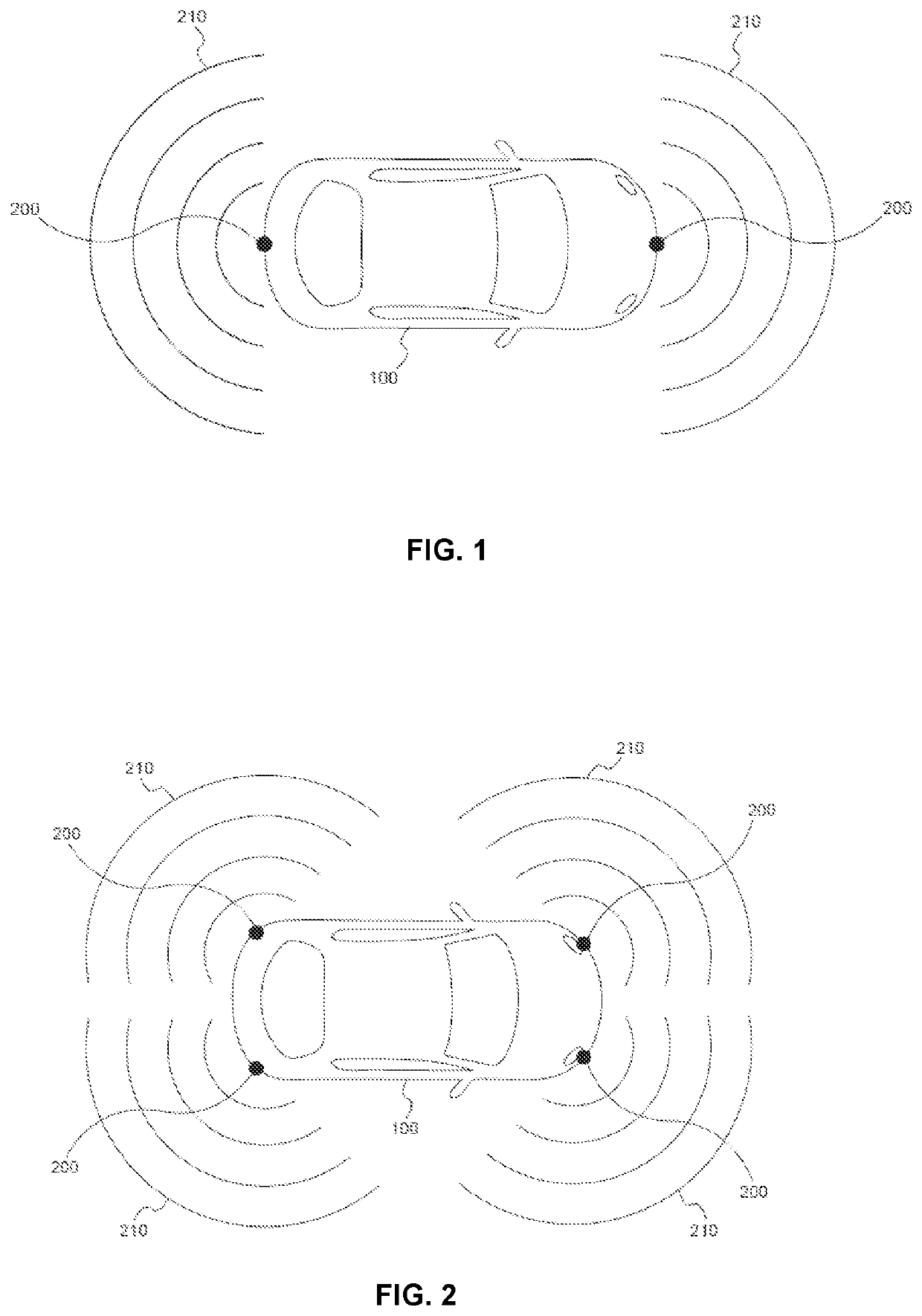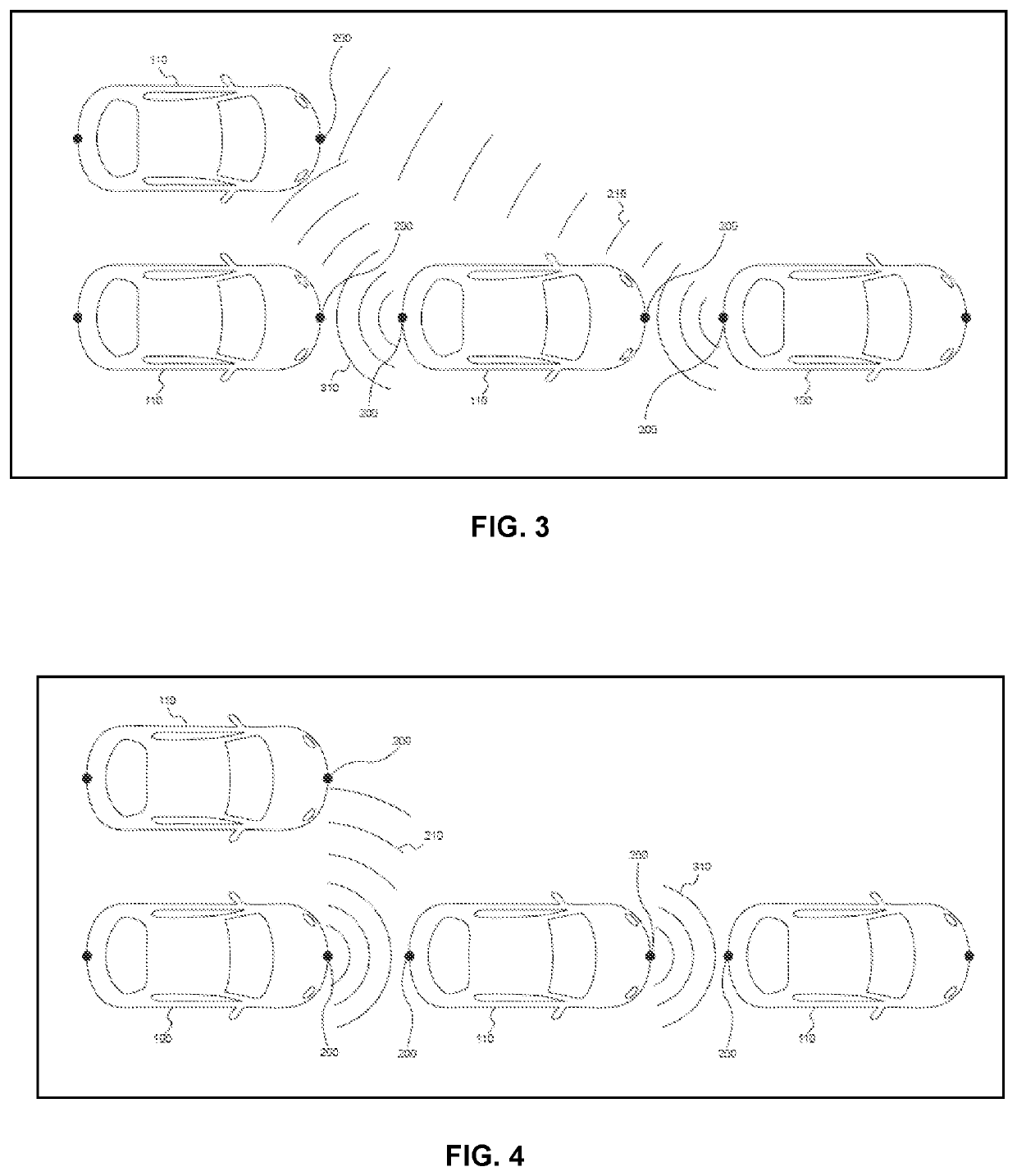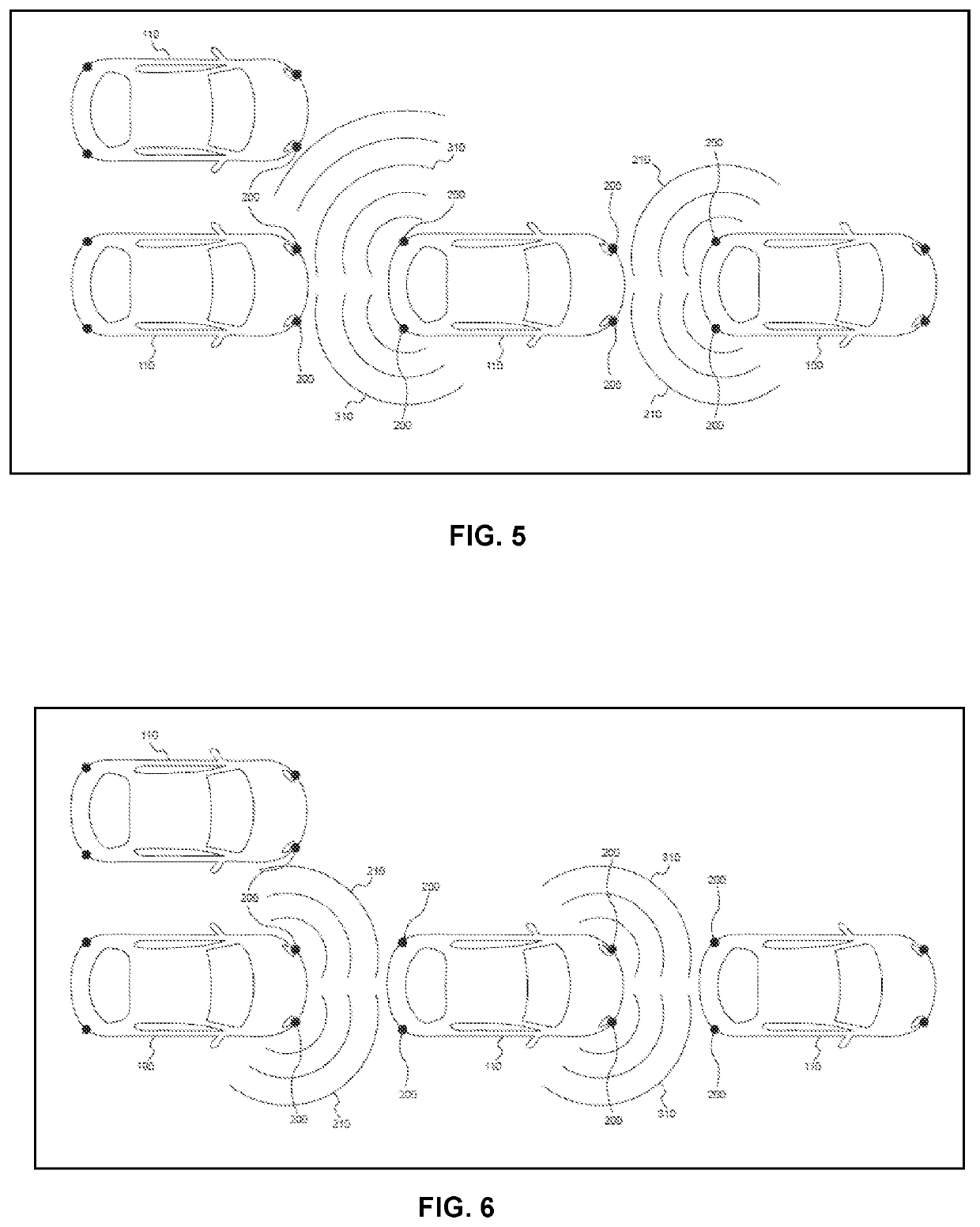Selective message retransmission in vehicle-vehicle communications
- Summary
- Abstract
- Description
- Claims
- Application Information
AI Technical Summary
Benefits of technology
Problems solved by technology
Method used
Image
Examples
Embodiment Construction
[0033]Embodiments of the present invention require a plurality of directional antennas to be mounted on a vehicle. At least two antennas are necessary, however the exact number of antennas in a particular embodiments may vary without departing from the scope of the invention, as long as the number is at least 2. Directional antennas are well known in the art and their design and installation is outside the scope of the present invention.
[0034]A vehicle configuration suitable for practicing the present invention with two directional antennas 200 mounted on vehicle 100 is illustrated in FIG. 1. The illustration also shows the respective propagation path for messages 210 transmitted by means of antennas 200.
[0035]A vehicle configuration with four directional antennas 200 mounted on vehicle 100 is illustrated in FIG. 2. The illustration shows the respective propagation path for messages 210 transmitted by means of antennas 200 in this configuration.
[0036]There are many different intende...
PUM
 Login to View More
Login to View More Abstract
Description
Claims
Application Information
 Login to View More
Login to View More - R&D
- Intellectual Property
- Life Sciences
- Materials
- Tech Scout
- Unparalleled Data Quality
- Higher Quality Content
- 60% Fewer Hallucinations
Browse by: Latest US Patents, China's latest patents, Technical Efficacy Thesaurus, Application Domain, Technology Topic, Popular Technical Reports.
© 2025 PatSnap. All rights reserved.Legal|Privacy policy|Modern Slavery Act Transparency Statement|Sitemap|About US| Contact US: help@patsnap.com



